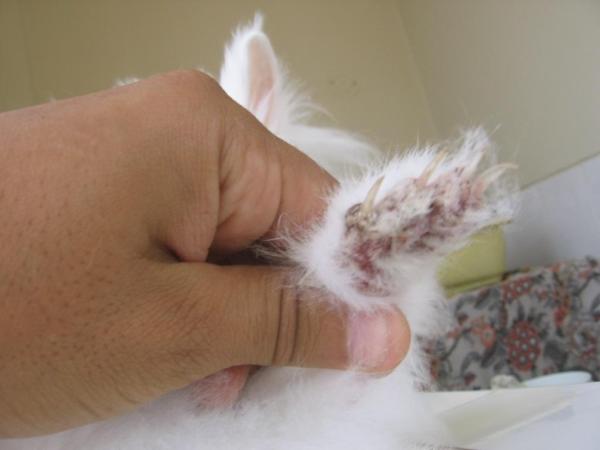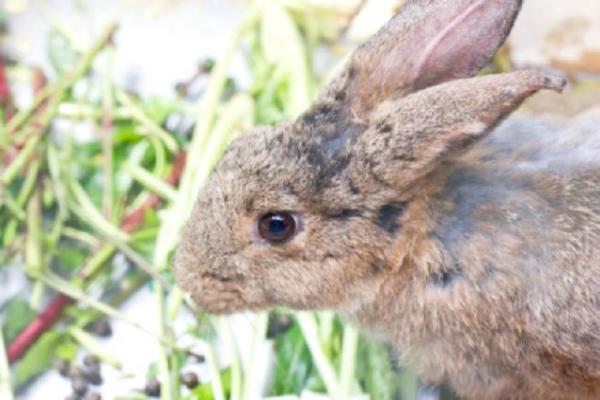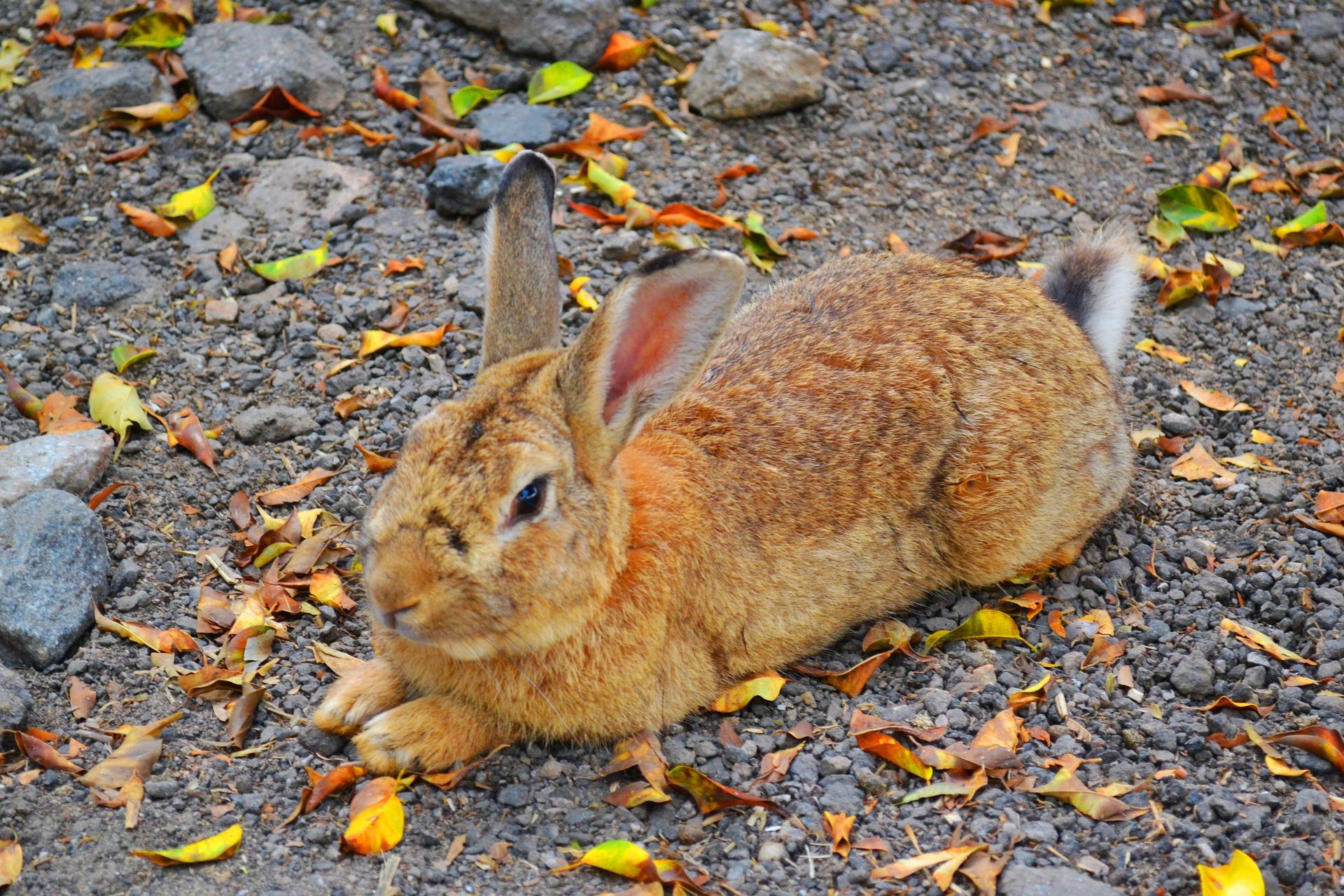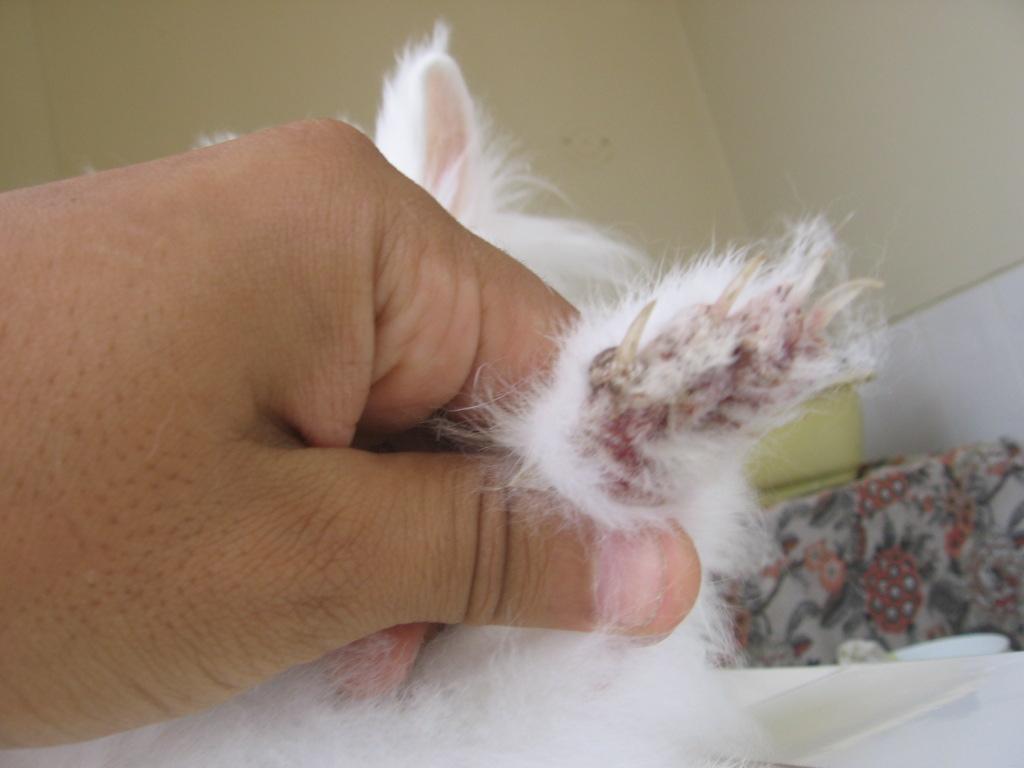My Rabbit Has Dry Skin - Mites and Skin Disease



See files for Rabbits
Rabbits are disease resistant to certain pathogens[1]. This doesn't mean they are immune to getting sick, but the process of domestication means they have a good chance at a healthy life when given the right care. Not a small part of providing the right care is the necessity of keeping an eye out in any changes to their skin. A rabbit's fur is an indicator of their overall health. If they are sick, then it will lose quality, become rougher and can even fall out in patches. If we can see that a rabbit has dry skin, then we should be concerned that we can see their skin in the first place. If this skin is dry, flaky or red and swollen, we should take particular note.
In this AnimalWised we look at some of the various mite infestations and skin diseases which can cause your rabbit to have dry skin. We look at the causes, symptoms and treatment of these conditions, as well as what we can do to prevent them occurring in the first place.
What causes dry skin in rabbits?
As we said, a rabbit's body is covered in fur and any loss of this fur is a cause for concern. Sometimes a rabbit's hair may fall out in patches, but it also possible that it will become thin and fall out more evenly. If the latter happens, we may be able to see through to the skin underneath and we are able to see changes in its quality. All types of hair loss are known as alopecia in rabbits, but there are different causes. Commonly, the skin will start to look dry and flaky, but can turn red and blotchy if left unattended.
You can also tell if a rabbit's skin is dry if you see flakes of white on their fur. Just as humans may have dandruff, a rabbit's skin may become dry and flaky and you will see pieces of dead skin. While this may not be sign of a major problem, it should be addressed in case the situation worsens. There are two main causes of dry skin in rabbits:
Bacterial skin infection
As the name implies, these types of skin disease in rabbits are caused by bacteria. While we might think that dry skin on rabbits might come from dry conditions, the opposite is often the case. If a rabbit lives somewhere warm and humid, this can be a breeding ground for certain types of bacteria. The types of bacteria which cause pyoderma (pustular bacterial skin disease) in rabbits include:
- Pasteurella multocida
- Psuedomonas aeruginosa
- Fusobacterium necrophorum
- Staphylococcus aureus
This bacteria can be transmitted through stool, food or unhygienic living conditions. If a rabbit has an injury from something and bacteria enters the wound site, then the skin disease can spread. Rabbit syphilis is another type of bacterial infection which can cause dry skin in rabbits. Although it cam be transferred sexually, it can also occur in singular rabbits. The dry skin will soon turn pustular and scab over.
Parasitical infestation
Similar to a bacterial skin disease, a parasitical infection is caused when a parasite enters the body of a rabbit. Specifically, ectoparasites are those which infest the skin. This is what can lead to dry skin, but there are various other symptoms which can arise from infestation. Some types of ectoparasites in rabbits include:
- Mites: these are arthropods which are tiny and can easily infest a rabbit without us noticing to begin with. you might notice that your rabbit has dry skin on his ears. This is because ear mites are one of the most common types of parasitical skin infections in rabbits.
- Fleas: fleas jump from host to host and can transmit a wide range of disease through their bite. They can also carry the eggs of other parasites and deposit them from one rabbit to another which develop into larvae.
- Ticks: when a tick bites a rabbit, they can transmit eggs via their mandibles.
One of the most common mites which causes dry skin is from the genus Cheyletiella. These mites live off the rabbit causing dry skin and a type of dermatitis (skin inflammation) known as cheyletiellosis. The rabbit will itch and may cause damage to the skin by scratching, but the mites themselves do not burrow deep enough to cause major skin damage. Many parasitical infestations are zoonotic which means they can be transferred to humans and cause similar problems.
When a rabbit has cheyletiellosis, it is often known as walking dandruff. This is because the mites carry skin flakes along the fur of the rabbit which makes it look as if they have dandruff that moves. These types of mites also infest dogs and cats, so it is important to isolate any animal in a household with a infestation. The specific name for mites which infest rabbits is Cheyletiella parasitivorax[2], but mites from one animal can infest another.
Fungal infestation
Certain skin diseases in rabbits sounds like are an infestation of parasites, but are actually fungi. Dermatophytes are a type of fungus which commonly affect rabbits. They cause the skin disease dermatophytosis which is commonly known as ringworm. Although not a parasite, the infestation causes lesions which start off as dry and flaky skin. They then turn into ring shaped red welts.
There are different types of dermatophytes such as Trichophyton mentagrophytes which lead to ringworm. Many of which can be transferred to humans. A 2016 study of rabbit farms in India showed that infestations occurred more in summer and autumn than the rest of the year[3].

Scabies in rabbits
Another type of mite infestation which causes dry skin in rabbits is scabies. The male mites which cause scabies stay on the surface of the skin, but the females burrow into the skin itself and lay their eggs. The larvae come out and can cause serious skin problems. At the beginning, this can present in symptoms of dry skin in rabbits, but the symptoms can worsen dramatically.
While the mites themselves only live for up to three weeks, they continuously feed off the rabbit's skin and lay new eggs to prolong the infestation. If a rabbit gets scabies and is not treated, it can be fatal within just a few weeks. As the mites burrow into the rabbit's skin, they scratch at them and can break open the skin. This opens up the wound to new bacterial infections and can be very painful. There are different types of scabies in rabbits and they come with specific symptoms:
1. Sarcoptic mange
This type of scabies is produced by the mite Scabei sarcoptes as well as other Sabei species. Symptoms of sarcoptic mange in rabbits include:
- Crusting and flaking around eyes, ears, feet, mouth and ears
- Foul odor
- Itching leading to scratching by the rabbit
- Hair loss
- Cracked skin and bleeding
2. Psoroptic or auricular scabies
This is caused by a mite known as Psoroptes and is a common type of ear mite. The scabs it causes are concentrated around this area and it can be very painful for the rabbit. It is also one of the most common types of infestation in rabbits[4]. Symptoms other than scabs include:
- Restlessness
- Itching and dry skin
- wax accumulation in ears
- Foul odor
- Otitis (ear inflammation)
3. Notoedric scabies
This is produced by the mite Notoedres cati and mainly affects the head and ears. It is commonly associated with cats, but can be passed on to rabbits and the symptoms are the same a sarcoptic mange including:
- Dry skin
- Scabbing
- Foul odor
- Hair loss
- Itching
4. Dermatorectic scabies
This is caused by the mite Demodex cuniculi and attacks deep into the layers of the skin resulting in:
- Dry skin leading to thickening of the dermis
- Injuries to ears, neck and face
- Hair loss
- Pain
5. Corioptic scabies
The culprit for this type of scabies is Chorioptes cuniculi. Although it is also an ear mite, the symptoms of this type of infestation are usually milder. However, it can still cause dry skin and result in itching. If this occurs, the rabbit can scratch and bite themselves leading to open wounds, infection and even death.
Diagnosis of skin disease in rabbits
If we see that our rabbit has dry skin, then we need to work out the cause. While we can look at the different symptoms, it will take a veterinarian to determine the problem. If we see dry skin in our rabbit, it might not be a sign of serious illness. However, as it equally could be the early sign of a life threatening illness, we should take our rabbit to the vet.
To diagnose the skin condition, the vet will need to examine the rabbit. If they are unable to determine the cause, they will perform a skin scraping. They will them plate this and observe it in a microscope to determine what type of problem is present and the type of mite (if applicable). If the parasitic infestation is detected early, treatment for scabies can be very effective.

Treatment for skin disease in rabbits
As there are various types of skin disease in rabbits, the treatment will depend on the cause. However, for bacterial skin infections, parasitical infestations and other infections, there are usually two major steps:
- Cleaning: the rabbit will need to be cleaned thoroughly, but the sensitivity of the rabbit needs to be considered. If the rabbit is very badly infected, then they may even need to be sedated. If the fur is particularly badly matted, then it may need to be sheared off.
- Medication: in most cases of bacterial skin infection in rabbits, the animal will require topical antibiotic treatment. They may also need NSAIDs (anti-inflammatory drugs) to cope with the pain and reduce inflammation of the skin.
For infestations of parasites, the antiparasitics ivermectin and selamectin are most common. They have both proven to be effective, although how long they take to work depends on whether they are injected or used topically[5]. The drug doramectin is also used to treat mange, but a 2010 study shows that it is generally not as effective as ivermectin[6].
Prevention of skin disease in rabbits
Whether our rabbit is recovering from an infection or infestation or if we simply want to never let it happen, there are some guidelines you can follow:
- Provide the rabbit with an appropriate diet which includes healthy treats to supplement vitamins.
- Keep their hutch well ventilated.
- Disinfect carpets, cushions, furniture and other places were any mites have been present (even if from an animal of a different species).
- Bathe the rabbit with anti-parasitical shampoo.
- Regularly clean the hutch and replace the substrate.
- Disinfect the rabbit's cage and any objects it comes in contact with if mites or parasites have been observed.
- Regular clean their brush.
- Keep any affected rabbits away from healthy ones until given the all-clear by a veterinarian.

This article is purely informative. AnimalWised does not have the authority to prescribe any veterinary treatment or create a diagnosis. We invite you to take your pet to the veterinarian if they are suffering from any condition or pain.
If you want to read similar articles to My Rabbit Has Dry Skin - Mites and Skin Disease, we recommend you visit our Parasitic diseases category.









